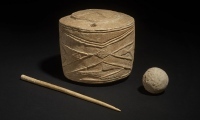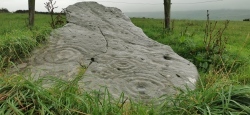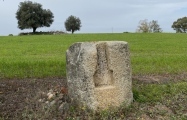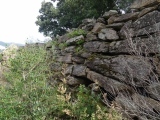Andy Burnham's Blog, page 149
February 15, 2022
Japanese Chronology for Dry Landscape Gardens since the Kamakura era (13th C)
The origin of Japanese gardens is thought to be the mountainous natural rock outcrop called iwakura (磐座 = stone pedestal) or the artificial stone circles (or enclosure, boundary) called iwasaka (磐境 = stone boundary) surrounding sacred areas, but the drastic change of significance of sacred stones towards luxury gardens, i.e. from worship and awe to appreciation and relaxation is a profound question. Here I introduce many of these peaceful sites that can be viewed on the Megalithic Portal.
Published on February 15, 2022 10:07
February 11, 2022
British Museum
Ancient drum shaped chalk object found in the area of and very similar to the Folkton Drums is described as most important prehistoric art find in UK for a century. It's going on display as part of the British Museum World of Stonehenge exhibition, which opens on Thursday 17th Feb. More details on our page. Museum in Greater London. The original and the best - the British Museum contains archaeology from around the world. Of particular interest are the Mold Cape, the Battersea horned helmet and shield, Lindow Man, Sutton Hoo, Mildenhall treasures and much, much more.
Published on February 11, 2022 07:40
February 9, 2022
Áth an Charbaill rock art
Rock art located in the townland of Áth an Charbaill, Co Kerry. On the visible portion of the stone the markings comprise 30 plain cup-marks, a cup-and-radial line, a few short curved or straight lines and 8 cup-marks enclosed by from 1 to 3 concentric circles. The stone measures c. 3.7m x 1.65m by a maximum of .50cm thick.
Published on February 09, 2022 12:33
February 8, 2022
Heksesteinen
The Heksesteinen or "witches rock" is a large boulder located almost at sea level on a flat rock surface just a few metres above the ocean water line, and with a beautiful view over Sognefjorden, Norway. The rock is around 4 metres long, 2 metres wide and 1.5 metres in height and has has three runic inscriptions with runes dating from the late iron to early medieval age.
Published on February 08, 2022 09:11
National Archaeological Museum Athens
The surviving fragments of the Antikythera Mechanism can be viewed here. It is very probable it was a mechanical computer of bronze gears made to make astronomical predictions, by mechanizing astronomical cycles and theories. (As published in Nature in 2021) More in the comments on our page. National Archaeological Museum near Omonoia in Athens. The largest archaeological museum in Greece and home to an astounding Prehistoric Collection, including "works of the great civilizations that developed in the Aegean from the sixth millennium BC to 1050 BC (Neolithic, Cycladic, Mycenaean), and finds from the prehistoric settlement at Thera."
Published on February 08, 2022 05:22
February 7, 2022
Bow Henge
Angie has added photos from the site of this henge in Devon. Bow Henge was discovered as crop-marks by the present Devon County Archaeologist Frances Griffith in 1984 whilst flying over Devon with Dickie Dougan (now deceased) as a part of an aerial archaeology exercise. This page was created in 2007.
Published on February 07, 2022 12:26
February 6, 2022
Roman Olive Oil Press
On a gravel road (sideway of the N260) amidst farmland with olive trees and huge stones grouped together, we have found this remarkable stone. It was made and used some time during the Roman period. This area is full of signs of early habitation.
Published on February 06, 2022 04:18
February 5, 2022
Monte Prana Muraglia Megalitica
A massive megalithic wall reaching up to 3m height runs along the ridge of the Monte Prana mountain, SW of the town of Lode, Sardinia. The cyclopean masonry clearly indicates prehistoric origin of the structure, although its chronology is unclear - it may be a Chalcolithic fortification of the Monte Claro culture or a Bronze Age Nuragic wall.
Published on February 05, 2022 03:35
February 4, 2022
Kirkhaugh Barrow
Kirkhaugh Barrow began as a round barrow but is now, after cultivation, more oval shaped. It has been excavated twice, in 1935 and 2014, by Maryon and then Fitzpatrick, and was found to have covered the inhumation of an adult male. The acidic moorland soil had consumed the body, which had been unusually laid on the ground rather than in a stone-lined cist, but the remaining grave goods were unusual and suggested that the individual enjoyed high status. There were the remains of an All-Over-Corded beaker, which gave a good indication that the burial was from the earliest Bronze Age, and a pair of gold hair clips - one discovered in 1935 and its pair in 2014 - showing that their owner was very well off.
Published on February 04, 2022 10:31
February 3, 2022
Mumbles Erratic
Brian John writes: Phil Holden is a professional photographer and 'hunts' for interesting erratics, amongst other things. He has discovered a massive glacial erratic, which took me by surprise, but I think it is very important. In my view this discovery is of huge importance to Ice Age research in South Wales and the debate about the origins and transport of the Stonehenge bluestones. But let's start at the beginning...
Published on February 03, 2022 05:53













